#Indian River Bay
Text
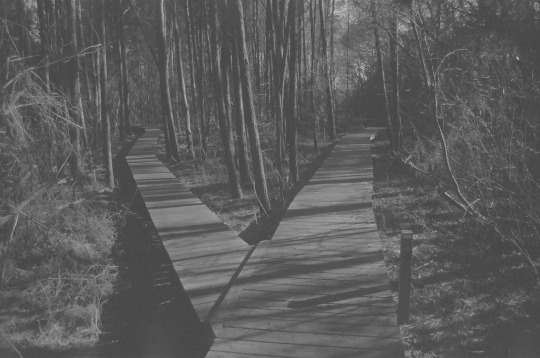
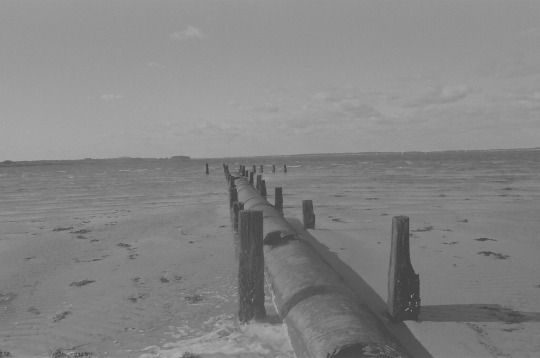
James Farm Ecological Preserve
Ocean View, Delaware
Kodak 400TX
Nikon FE2
#film#black and white#grain#analog#Kodak#Kodak 400TX#Nikon#Nikon FE2#James Farm#James Farm Ecological Preserve#Ocean View#Delaware#Chesapeake Bay#Indian River Bay
2 notes
·
View notes
Photo

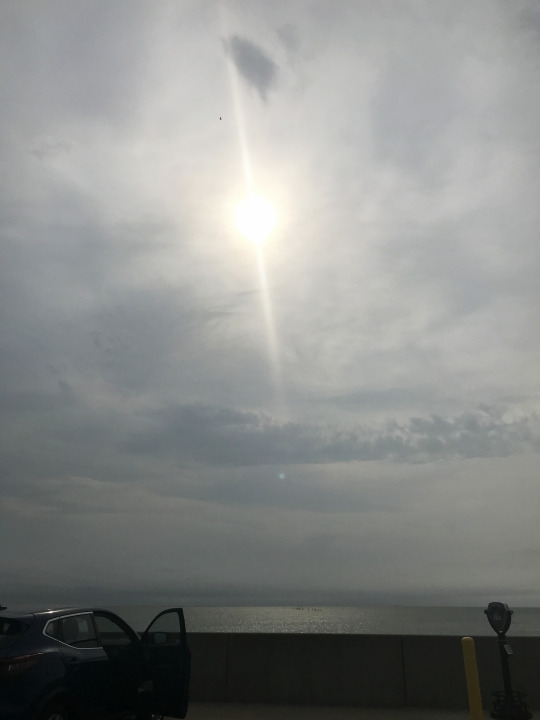
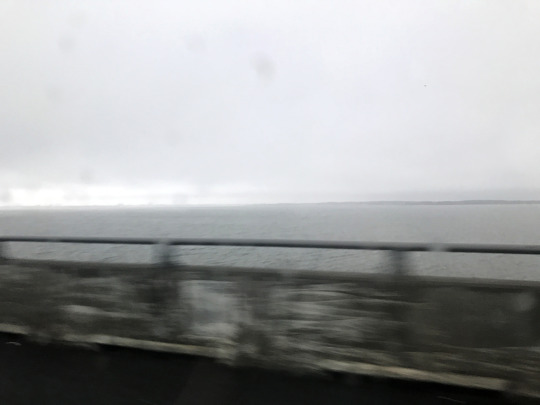

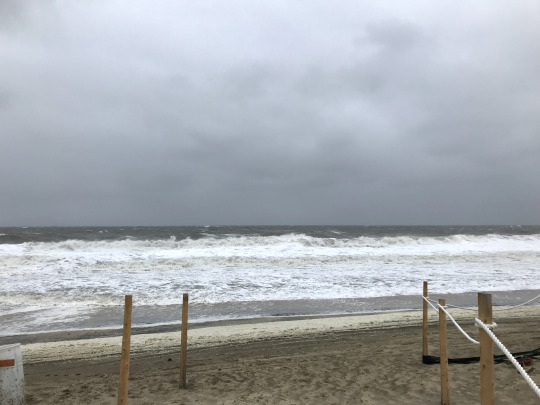
stormy weekend road trip mood board: May 6-8, 2022: Chesapeake Bay Bridge-Tunnel; Indian River Inlet Bridge; and Dewey Beach, Delaware | SM Piotrowski
#Chesapeake Bay#Virginia#Delaware#Dewey Beach#bridges#water#clouds#birds#Atlantic Ocean#road trips#places#selenographie#Chesapeake Bay Bridge Tunnel#Indian River Inlet Bridge
2 notes
·
View notes
Text
On The Road Again: From Smoky Mountains To Sweet Home Alabama
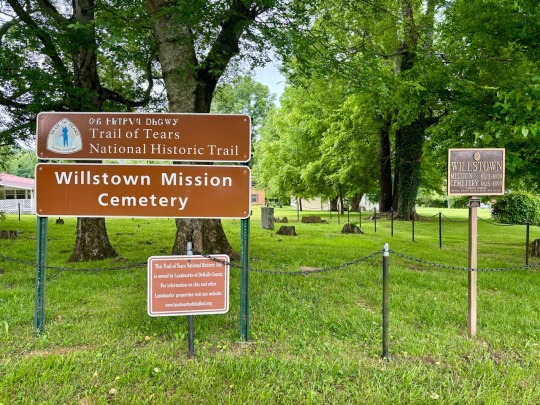
View On WordPress
#Alabama#Bay Minette#Cherokee#Fort Payne#independent travel#Indian removal act#Little River Canyon#Mentone#Trail of tears#Travel journalism#travel photography#USA road trip
0 notes
Text
favourite poems of december
a.r. ammons collected poems: 1951-1971: "dunes"
jennifer robertson shrill shirts will always balloon
n. scott momaday in the presence of the sun: stories and poems, 1961-1991: "the delight song of tsoai-talee"
ted berrigan the collected poems of ted berrigan: "bean spasms"
natalie diaz when my brother was an aztec: "abecedarian requiring further examination of anglikan seraphym subjugation of a wild indian rezervation"
greg miller watch: "river"
joanna klink excerpts from a secret prophecy: "terrebonne bay"
dorothy dudley pine river bay
brenda shaughnessy our andromeda: "our andromeda"
frank lima incidents of travel in poetry: "orfeo"
lehua m. taitano one kind of hunger
no'u revilla kino
linda hogan when the body
paul verlaine one hundred and one poems by paul verlaine: a biligual edition: "moonlight" (tr. norman r. shapiro)
mahmoud darwish the butterfly's burden: "the cypress broke" (tr. fady joudah)
mahmoud darwish the butterfly's burden: "your night is of lilac"
amir rabiyah prayers for my 17th chromosome: "our dangerous sweetness"
sara nicholson the living method: "the end of television"
charles shields proposal for a exhibition
ginger murchison a scrap of linen, a bone: "river"
tsering wangmo dhompa virtual
anne carson the beauty of the husband: "v. here is my propaganda one one one one oneing on your forehead like droplets of luminous sin"
muriel rukeyser the collected poems of muriel rukeyser: "the book of the dead"
anne stevenson stone milk: "the enigma"
david tomas martinez love song
robert fitzgerald charles river nocturne
thomas mcgrath the movie at the end of the world: collected poems: "many in the darkness"
linda rodriguez heart's migration: "the amazon river dolphin"
donald revell the glens of cithaeron
sumita chakraborty dear, beloved
angela jackson and all these roads be luminous: "miz rosa rides the bus"
kofi
#tbr#poetry#poetry list#tbr list#ar ammons#collected poems: 1951-1971#collected poems#a.r. ammons#dunes#jennifer robertson#shrill shirts will always balloon#n. scott momaday#n scott momaday#in the presence of the sun#the delight song of tsoai-talee#ted berrigan#the collected poems of ted berrigan#bean spasms#natalie diaz#when my brother was an aztec#abecedarian requiring further examination of anglikan seraphym subjugation of a wild indian rezervation#angela jackson#miz rosa rides the bus#and all these roads be luminous#ginger murchison#greg miller#watch#dorothy dudley#pine river bay#robert fitzgerald
235 notes
·
View notes
Text
Atrocity created by CAPITALISM
Irish Famine (1845-1852)
Indian Famines during British colonial rule (Various, 18th-20th centuries)
Indigenous Genocide (Ongoing since colonization)
Slavery (16th-19th centuries)
Indonesian Genocide (1965-1966)
Pinochet Dictatorship (1973-1990)
Argentina Dictatorship (1976-1983)
Brazilian Dictatorship (1964-1985)
Pakistan Incident (Bangladesh Genocide, 1971)
The Gilded Age (Late 19th century)
The Great Depression (1929-1939)
Operation Condor (1960s-1980s)
Banana Wars (Early 20th century)
Batista Dictatorship (1952-1959)
Guantanamo Bay (Ongoing since 2002)
Vietnam War (1955-1975)
My Lai Massacre (1968)
Sinchon Massacre (Korean War, 1950-1953)
Kent State Massacre (1970)
Patriot Act (2001)
Red Summer (1919)
Jim Crow (Late 19th-20th centuries)
MK Ultra (1950s-1970s)
1985 MOVE bombing (1985)
1921 Battle of Blair Mountain (1921)
Malayan Emergency (1948-1960)
Mau Mau Rebellion (1952-1960)
Covert war in Yemen (Ongoing)
Stanley Meyer incident (1998)
Genocide in Turkey (Armenian Genocide and others, WWI era)
Congolese Genocide (Late 19th-20th centuries)
Greek Civil War (1946-1949)
Invasion of Cyprus by Turkey (1974)
Washita River Massacre (1868)
Minamata Disaster (1950s-1960s)
Bhopal Disaster (1984)
Kentler Project (1960s-2003)
Thomas Midgley Jr. and leaded gasoline (Early 20th century)
Forced labor in private US prisons (Ongoing)
Collateral murder in Iraq (2010)
Julian Assange and leaks (Ongoing)
US drone strikes (Ongoing)
US sanctions (Ongoing)
US support for dictatorships (Ongoing)
Korean War and civilian casualties (Korean War, 1950-1953)
Nazi funding and collaboration (WWII era)
Hitler and "Judeo-Bolshevism" (WWII era)
#communism#anarchism#marxism leninism#marxism#leftism#socialism#politics#american politics#government#republicans#us politics#conservatives#capitalism#social issues#poverty#anti capitalism#late stage capitalism#eat the rich#leftist#corporate greed#fuck capitalism#kill the rich#eat the fucking rich#fuck billionaires
374 notes
·
View notes
Text
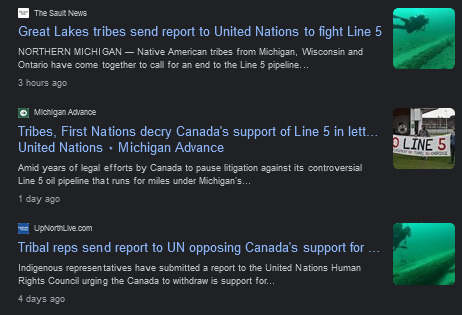
---


Native American tribes from Michigan, Wisconsin and Ontario have come together to call for an end to the Line 5 pipeline.
The Enbridge Line 5 crude oil pipeline, first constructed in 1953, stretches from Wisconsin through 645 miles of Michigan and ends in Sarnia, Ontario. Part of the pipeline travels underwater through the Straits of Mackinac.
In recent years, the pipeline's continued operation has become a source of controversy. Many tribal nations and communities claim that the pipeline goes through their traditional territories. The Straits area in particular is considered a place of significant cultural and historical importance to many native groups, including the Anishinaabe. According to tribal leaders, the pipeline poses a major and direct threat to the ecosystems along its path.
“The Straits of Mackinac are [...] sacred from both a cultural and historical perspective in the formation of the Anishinaabe people,” said Austin Lowes, chairperson of the Sault Ste. Marie Tribe of Chippewa Indians, in a statement. “Protecting the Straits is also a matter of the utmost environmental and economic importance — both to our people and the state of Michigan.”
Tribal leaders and other environmental groups have publicly opposed the pipeline for many years and have called for the pipeline to be shut down.
Supporters of the pipeline point out that it transports 540,000 barrels of light crude oil and natural gas liquids through Line 5 on a daily basis. [...]
In an effort to address safety concerns, Enbridge has proposed an underwater tunnel to house the portion of Line 5 that runs under the Straits of Mackinac. [...] Critics of the tunnel project say no oil should be transported through the Straits at all, as a spill could have a devastating impact on more than 700 miles of Great Lakes shoreline. [...]
Previous attempts to shut down the pipeline have been stopped through various means, mostly the 1977 Transit Pipeline Treaty between Canada and the United States.
The latest attempt saw 51 tribal organizations from Wisconsin, Michigan and Ontario submit a report to the United Nations Human Rights Council. This report, dated April 4, claims that the Government of Canada is violating the human rights of Indigenous peoples through its continuous support for Line 5.
The report was submitted to be considered during Canada's upcoming Universal Periodic Review, conducted by the United Nations. As a United Nations member state, Canada is required to be evaluated for its human rights record on a regular basis.
Canada's Universal Periodic Review will take place this year on Nov. 6-17.
The 51 different tribal organizations that signed the report include: The Anishinabek Nation, which represents 39 First Nations throughout the province of Ontario, Sault Ste. Marie Tribe of Chippewa Indians, Bad River Band of the Lake Superior Tribe of Chippewa Indians, Bay Mills Indian Community, Grand Traverse Band of Ottawa & Chippewa Indians, Hannahville Indian Community, Lac Vieux Desert Band of Lake Superior Chippewa Indians, Little River Band of Ottawa Indians, Little Traverse Bay Bands of Odawa Indians, Match-e-be-nash-she-wish Band of Pottawatomi Indians, Nottawaseppi Huron Band of Potawatomi, Saginaw Chippewa Indian Tribe and Red Cliff Band of Lake Superior Chippewa.
---
Headline and text by: Brendan Wiesner. “Michigan, Wisconsin and Canadian tribes come together to fight Line 5.” Yahoo! News. 8 April 2023. Article originally appeared on The Sault News with the title “Great Lakes tribes send report to United Nations to fight Line 5.” [Some paragraph breaks and contractions added by me.]
Context:
Line 3 brings oil from Alberta to Lake Superior. Then, Line 5 brings the fossil fuel from the Duluth area to the Detroit/Windsor area in Ontario.
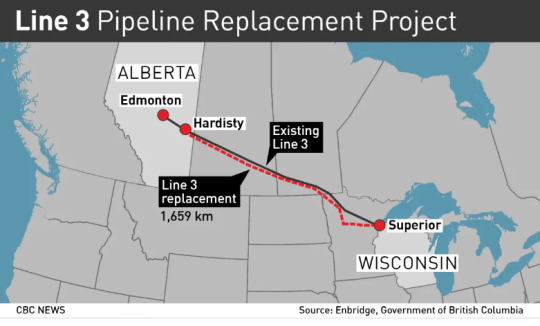
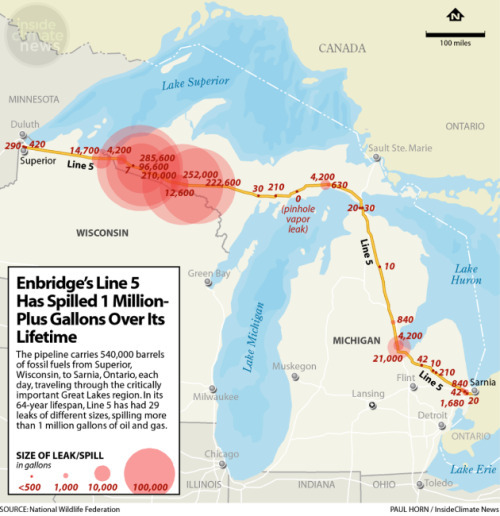
693 notes
·
View notes
Text




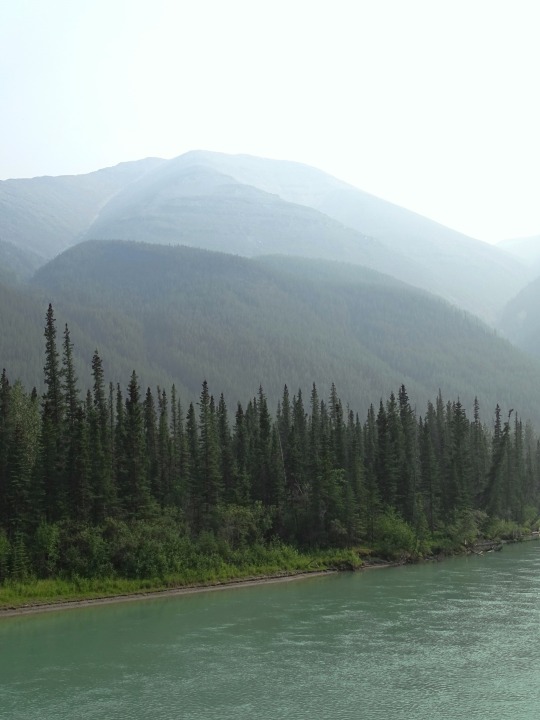



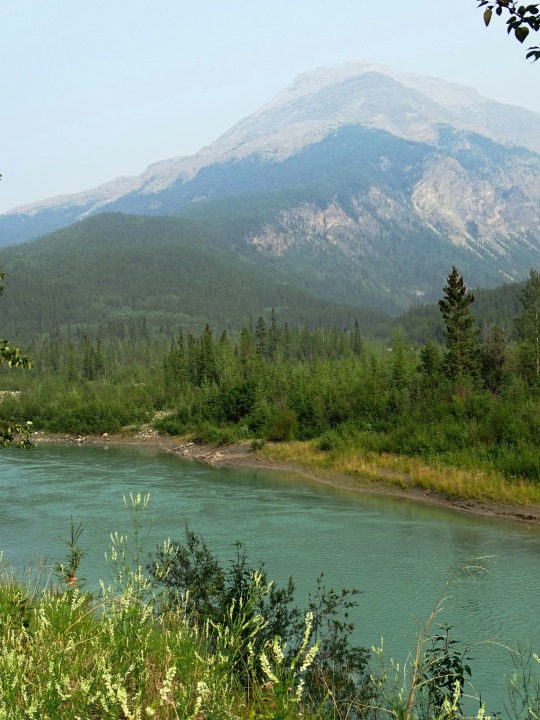

Along Toad River, BC (No. 1)
The Toad River is a river in the Canadian boreal forest, within the borders of the province of British Columbia.
The Toad River was named for the numerous large toads seen along its banks by fur traders of the early 19th century. John McLeod of the Hudson's Bay Company, who traveled up the river in 1831, wrote: "it derives its appellation from the number of Toads seen along its banks and some are of immense size; I have seen some which weighed upwards of a pound, and the Indians inform me there are some to be seen of a much larger size."
The traditional indigenous name for the river is Tsal-eh-chesi.
Source: Wikipedia
#Stone’s Sheep Trail#Toad River#BC#travel#original photography#vacation#tourist attraction#landmark#landscape#countryside#British Columbia#woods#forest#nature#flora#tree#wildfire smoke#summer 2023#Canada#boreal forest#Canadian Rockies#Rocky Mountains#Northern Rockies#Alaska Highway#rocks#insect
29 notes
·
View notes
Text
not your founding father (mouthpiece)
My thoughts on Louis Riel being named first premier of Manitoba.
Taanshi kiyawow, Riel dishinikashoon. I descend maternally from seven Métis families from the historic Red River Settlement in Manitoba and Batoche, Saskatchewan. Notably, my Berthelett ancestors worked for the North West Company and were community leaders in the Métis settlement of Pointe a Grouette before it was systemically overtaken by French settlers who claim we formed no roots in the area (St. Onge). My Caron ancestors from Batoche fought in the North West Resistance alongside Louis Riel and Gabriel Dumont. My fifth-great-uncle Jean Caron Sr. fought alongside his sons at the age of 52; his house still stands in Batoche to this day, where thousands of Métis make pilgrimages every year to remember the events of 1885.
What do you know about Louis Riel?
I can only read his words and imagine what guidance he would have provided had he lived longer than 41 years. Or imagine myself in his place as he walked to the gallows on November 16th, 1885. As a child when I visited Manitoba my grandpa and my kokum would take me to visit his grave, just as they did with my mother, who named me ‘Riel’.
We are inextricably linked through time and across our homelands. What’s in a name? Unasked for? Not yet earned? I do not yet know who I am to my people but I carry an important name and the trickster’s spirit, and with these comes the responsibility of understanding and revealing cultural and societal truths (Stimson).
I am still growing into my name
Today I am a mouthpiece
An interpreter of the past
What do you know about the trial of Louis Riel?
July 31st, 1885, Riel gives his final speech. Historical weather data shows that it was a hot day in Regina. Cooler than the days before but still hot with the swelter of the plains. He spoke long, in English, not the language of his birth.
“The day of my birth I was helpless and my mother took care of me although she was not able to do it alone; there was someone to help her to take care of me and I lived. Today, although a man, I am as helpless before this court, in the Dominion of Canada and in this world, as I was helpless on the knees of my mother the day of my birth. The Northwest is also my mother; it is my mother country and although my mother country is sick and confirmed in a certain way, there are some from Lower Canada who came to help her to take care of me during her sickness and I am sure that my mother country will not kill me more than my mother did forty years ago when I came into the world, because a mother is always a mother, and even if I have my faults, if she can see I am true, she will be full of love for me.”
“When I came into the Northwest in July, the 1st of July 1884, I found the Indians suffering. I found the half-breeds eating the rotten pork of the Hudson Bay Company and getting sick and weak every day. Although a half-breed, and having no pretension to help the whites, I also paid attention to them. [...] We have made petitions, I have made petitions with others to the Canadian government asking to relieve the condition of this country.”
“We have taken time; we have tried to unite all classes, even may speak, all parties.”
“During my life I have aimed at practical results. I have writings, and after my death I hope that my spirit will bring practical results.”
“When we sent petitions to the Government, they used to answer us by sending police [...] There are papers which the Crown has in its hands, and which show that demoralisation exists among the police, if you will allow me to say it in the court, as I have said it in writing.”
“If I am blessed without measure I can see something into the future, we all see into the future more or less.”
“The only things I would like to call your attention to before you retire to deliberate are:
1st That the House of Commons, Senate and Ministers of the Dominion, and who make laws for this land and govern it, are no representation whatever of the people of the North-West.
2nd That the North-West Council generated by the Federal Government has the great defect of its parent.
3rd The number of members elected for the Council by the people make it only a sham representative legislature and no representative government at all.”
“I have never had any pay. It has always been my hope to have a fair living one day. It will be for you to pronounce - if you say I was right, you can conscientiously acquit me, as I hope through the help of God you will. You will console those who have been fifteen years around me only partaking in my sufferings. What you will do in justice to me, in justice to my family, in justice to my friends, in justice to the North-West, will be rendered a hundred times to you in this world, and to use a sacred expression, life everlasting in the other.”
What do you know about Louis Riel?
I have done this walk in my mind so many times that I have lost count. Historical accounts of the day note that it was a chill, clear, autumn morning. The prairies stretched out, silver frost bathed in sunlight. He faced it all and was brave until the end. Despite reports of it being destroyed, former premier of Manitoba Duff Roblin and his family, and the RCMP gloat over the supposed fragments of the rope that hanged the traitor, and I wonder how long the rope would be if you lined up every single scrap of twine rumoured to be the noose that killed Riel?
Does it make you feel less guilty to call him a founding father? Canadians are only able to remember him through his murder and not through his words that can still animate his presence. Written words and objects once owned are ghosts, extensions of our bodies and spirits. When I read his letters and journals I see the urgency in his penmanship, and I think about the sweat and invisible oils of his skin becoming a part of each page as he wrote and wrote and wrote. I wonder where each journal travelled with him during his exile, and why he chose each book. There is one with an illustration of a guardian angel watching over two children, and I wonder if he thought of himself as one of them being shepherded through life by his ancestors.
Canadians argue about whether or not Riel should have been hanged instead of talking about what he had believed and said and accomplished, and what he wanted to do with the rest of his life had it not been cut short.
No one talks about his dreams or his fears, and he did not live long enough to answer the question of if he would have wanted to be revered as the first premier of Manitoba. Or, in response would he ask for clean water for all, to stop the sweeps, and starlight tours? Would he ask for the Winnipeg police to search the landfills for our murdered women instead of brutalizing and killing us? Would he call for an end to all colonialism and genocide? Or would he simply ask for a place to smudge and be in peace for a while?
When we send petitions to the government they still answer us by sending the police, before turning around and calling Louis Riel a founding father (Riel).
Canada cannot answer these questions for him by giving him that title posthumously, only sit with the discomfort of blood-soaked hands, and wonder how different things would have been had that sacred fire not been snuffed out in 1885.
I cannot answer these questions for him either
And I am still growing into our name.
Works Cited
Riel, Louis. Excerpts from his final statement in court on trial, July 31st, 1885
Stimson, Adrian, “Buffalo Boy: Then and Now.” Fuse Magazine, vol. 32, no. 2, 2009, pp. 18-25.
St-Onge, Nicole J.M. “The Dissolution of a Métis Community: Pointe à Grouette, 1860–1885.” Studies in Political Economy 18.1 (1985): 149–172. Web.
#all love to wab kinew but like....mr riel just wants community food and housing and to not get murdered and also our land rights back#like he just wanted us to live our little métis lives in peace and he hated the canadian government#my work#this was part of a performance but i would just like to post the text#native#métis#louis riel#politics#canadian politics#canadian history#métis history#first nations history#fnmi#mmiw#first nations métis inuit#missing and murdered indigenous women and girls#mmiwg2s#colonialism#canadian colonialsm#land back#history#poetry#personal writing#indian#ndn#american indian movement#north west resistence#red river residence
26 notes
·
View notes
Text
The Chinook Indian Nation are the original people who lived in the ancestral homelands where the Columbia River meets the Pacific Ocean. They hold their sovereignty as a way to honor their ancestors and their land, which includes the Naselle Youth Camp.
The Naselle Youth Camp is a natural place to headquarter the Chinook Indian Nation and ensures everyone wins. It's on their ancestral land and not currently being used. Owning this facility will change the trajectory of their community and the futures of their families. No one should stand in the way of this transfer that is good for the Chinook Indian Nation and the greater Southwest Washington community.
It is imperative that the Chinook Indian Nation secures a new headquarters for the safety of their community. Their current headquarters sit on an island in Willapa Bay, where sea levels and the threat of an impending megaquake and tsunami continue to rise.
It is time for our government to prioritize rural Washington, including the Chinook community. Supporting the return of the Naselle Youth Camp is a way to demonstrate the state’s commitment to the well-being of all citizens, regardless of their location.
By signing this petition, I am expressing my support for the Chinook Indian Nation's acquisition of the Naselle Youth Camp. Establishing a new headquarters will provide safety, stability, and a brighter future for their community. I urge Washington officials to take action and right the wrongs of the past by returning the Naselle Youth Camp to its rightful owners.Together, let us make our voices heard and stand in solidarity with the Chinook Indian Nation. Sign this petition to support the return of the Naselle Youth Camp and demonstrate our commitment to justice, equality, and the well-being of all communities, both now and for generations to come.
77 notes
·
View notes
Text
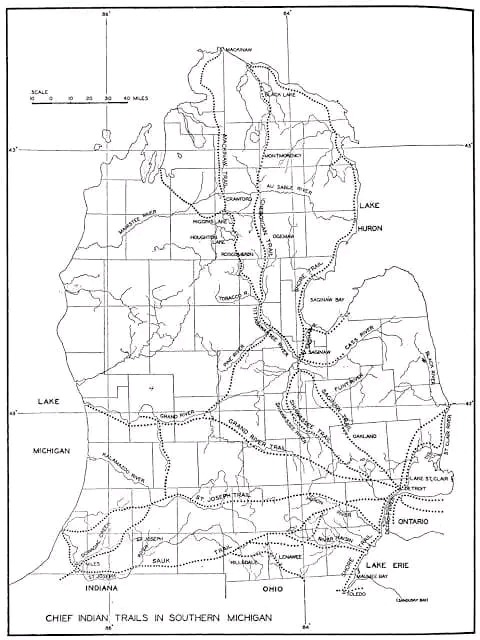
Michigan's first trails were not made by native Americans but ranging buffalo herds in migration. This was especially true on the St. Joseph trail in Southwest Michigan. The major trails in lower Michigan tended to link Indian settlements of Mackinac, Detroit, Saginaw, and Niles. The area around Saginaw had the most native American settlements in the Great Lakes region.
Noted below are native trails that we travel everyday.
Shore Line Trail - A minor trail starting near Toledo and hugging Lake Erie's shore, the Straits of Detroit. Past Fort Gratiot and Lake Huron to a spot near White Rock. White Rock was considered a solemn spiritual place of offering. Today this route is mirrored by Lakeshore Drive from Detroit to Lexington and M-25 north. This trail continues north along the entire shore to Cheboygan. It was considered a minor trail as travel via canoe was preferred along this route. Michigan chose to utilize much of the original Native American trail along Lake Huron and Saginaw Bay to create M-25. Paving of Michigan's First Scenic Highway was started in 1933 and completed in 1940.
Saginaw Trail - One of the oldest trails, this Sauk trail system, went from the Straits of Detroit to Saginaw. Today this starts at the Detroit River and heads northwest up Woodward Avenue to Pontiac, then continues up Dixie Highway through Flint to Saginaw.
Sand Ridge Indian Trail - An ancient trail from Saginaw to Port Austin in Michigan's Thumb. Used primarily for access to the rich hunting ground of the Thumb. Today, M-25 follows much of the same route. However, the old trail is still evident and marked as Sand Road in Huron County. A major canoe passage across Saginaw Bay occurred at Oak Point via Charity Island to reach the AuSable River.
St. Joseph's Trail - A major east-west system called Route du Sieur de la Salle and the Territorial Road. When the Territorial road was first built from Plymouth to St Joseph, a portion of the road was ‘corduroy.’ which means wood lo
15 notes
·
View notes
Note
When I was a kid, I heard not to call indigenous people Eskimo because it's derogatory. It means something to the effect of "eater of raw meat". "Inuit" was recommended instead.
As an adult, I've heard that they'd prefer Eskimo to Inuit because the former is a general term, whereas the latter is a specific tribe (and they hate getting confused with other tribes).
Inuit and Ojibwe are two tribes I've heard associated with Canada. I'd be interested in whatever other info (if any) you could dump on me.
Eskimo actually comes from the French word esquimaux, meaning one who nets snowshoes.
You are correct, Inuit is not the preferred term, while one group does use the term the hundreds of others do not.
To list a few terms used by the tribes aside from Inuit there is Inuvialuit, Inuinnaat, Inupiat, Yupiit, Cupiit, Yupiget, Yupik, and Sugpiat, but they can all be grouped under the term Eskimo as despite their varying cultures and traditions, all use snowshoes.
The Ojibwe live in both the United States and Canada and occupy land around the entire Great Lakes, including in Minnesota, North Dakota, Wisconsin, Michigan, and Ontario.
It'll be hard to name all of the tribes in Canada off the top of my head...
There are more than 630 tribal communities in Canada, which represent more than 50 Nations and 50 languages, but from the top of my head I can name the;
The Cree are one of the largest tribes in Canada. Their territory covers a vast area of Western Canada from the Hudson-James Bay region to the foot of the Rocky Mountains, and in Alberta between the North banks of the North Saskatchewan River to Fort Chipewyan.
The Dene have historically inhabited central and northwestern Canada in an area known as Denendeh, meaning “the Creator's Spirit flows through this Land” or “Land of the People.” This region includes the Mackenzie River Valley and the Barren Grounds in the Northwest Territories.
The Haida People have occupied Haida Gwaii since time immemorial. Their traditional territory encompasses parts of southern Alaska, the archipelago of Haida Gwaii and its surrounding waters.
The Niitsitapi, also known as the Blackfoot or Blackfeet Indians, reside in the Great Plains of Montana and the Canadian provinces of Alberta and Saskatchewan. Originally, only one of the Niitsitapi tribes was called Blackfoot or Siksika.
The majority of Métis live in the western provinces and Ontario, they are the product of tribal marriages with the French, they were rejected by both the tribes and the French and so formed their own tribe.
The Mohawk people are the most easterly section of the Iroquois Confederacy. They are an Iroquoian-speaking Indigenous people of North America, with communities in southeastern Canada and northern New York State, primarily around Lake Ontario and the St. Lawrence River.
The Nootka are a people who live on what is now the southwest coast of Vancouver Island, and on Cape Flattery, and the northwest tip of the state of Washington.
The Huron-Wendat are one of Québec's most urbanized Indigenous nations. Their cousins the Wyandot moved to Michigan, Ohio, Kansas, and Oklahoma.
Mi'kmaq communities are located predominantly in Nova Scotia and New Brunswick, but with a significant presence in Quebec, Newfoundland, Maine and the Boston area.
The Nuxalk people call themselves the Nuxalkmc. Traditional Nuxalk territory is the central coast of British Columbia, from the mouth of the Bella Coola River inland along the Bella Coola Valley and nearby inlets and channels.
Also, the Canadian Ojibwe tribes are the same as the American Chippewa tribes, like I mean they are the exact same tribe just called different names.
81 notes
·
View notes
Text
Even the most nonsensical idioms in the English language originated somewhere. Some terms, like silver lining and tomfoolery, have innocuous roots, while other sayings date back to the darkest chapters in U.S. history. While these common phrases are rarely used in their original contexts today, knowing their racist origins casts them in a different light.
1. Tipping Point
This common phrase describes the critical point when a change that had been a possibility becomes inevitable. When it was popularized, according to Merriam-Webster, it was applied to one phenomenon in particular: white flight. In the 1950s, as white people abandoned urban areas for the suburbs in huge numbers, journalists began using the phrase tipping point in relation to the percentage of non-white neighbors it took to trigger this reaction in white city residents. Tipping point wasn’t coined in the 1950s (it first appeared in print in the 19th century), but it did enter everyday speech during the decade thanks to this topic.
2. Long Time, No See
The saying long time, no see can be traced back to the 19th century. In a Boston Sunday Globe article from 1894, the words are applied to a Native American speaker. The broken English phrase was also used to evoke white people’s stereotypical ideas of Native American speech in William F. Drannan’s 1899 book Thirty-One Years on the Plains and in the Mountains, Or, the Last Voice from the Plains An Authentic Record of a Life Time of Hunting, Trapping, Scouting and Indian Fighting in the Far West.
It’s unlikely actual Native Americans were saying long time, no see during this era. According to the Oxford English Dictionary, this type of isolating construction would have been unusual for the indigenous languages of North America. Rather, it originated as a way for white writers to mock Native American speech, and that of non-native English speakers from other places like China. By the 1920s, it had become an ordinary part of the American vernacular.
3. Mumbo Jumbo
Before it was synonymous with jargon or other confusing language, the phrase mumbo jumbo originated with religious ceremonies in West Africa. In the Mandinka language, the word Maamajomboo described a masked dancer who participated in ceremonies. Former Royal African Company clerk Francis Moore transcribed the name as mumbo jumbo in his 1738 book Travels into the Inland Parts of Africa. In the early 1800s, English speakers started to divorce the phrase from its African origins and apply it to anything that confused them.
4. Sold Down the River
Before the phrase sold down the river meant betrayal, it originated as a literal slave-trading practice. Enslaved people from more northerly regions were sold to cotton plantations in the Deep South via the Mississippi and Ohio rivers. For enslaved people, the threat of being “sold down the river” implied separation from family and a guaranteed life of hard labor and brutal conditions. A journal entry from April 1835 mentions a person who, “having been sold to go down the river, attempted first to cut off both of his legs, failing to do that, cut his throat, did not entirely take his life, went a short distance and drowned himself.”
5. No Can Do
Similar to long time, no see, no can do originated as a jab at non-native English speakers. According to the OED, this example was likely directed at Chinese immigrants in the early 20th century. Today, many people who use the phrase as general slang for “I can’t do that” are unaware of its cruel origins.
6. Indian Giver
Merriam-Webster defines an Indian giver as “a person who gives something to another and then takes it back.” One of the first appearances was in Thomas Hutchinson’s History of the Colony of Massachuset’s Bay in the mid 18th century. In a note, it says “An Indian gift is a proverbial expression, signifying a present for which an equivalent return is expected.” In the 19th century, the stereotype was transferred from the gift to the giver, the idea of an “equivalent return” was abandoned, and it became used as an insult. An 1838 N.-Y. Mirror article mentions the “distinct species of crimes and virtues” of schoolchildren, elaborating, “I have seen the finger pointed at the Indian giver. (One who gives a present and demands it back again.)”
Even as this stereotype about Indigenous people faded, the phrase Indian giver has persisted into the 21st century. The word Indian in Indian giver also denotes something false, as it does in the antiquated phrase Indian summer.
7. Cakewalk
In the antebellum South, some enslaved Black Americans spent Sundays dressing up and performing dances in the spirit of mocking the white upper classes. The enslavers didn’t know they were the butt of the joke, and even encouraged these performances and rewarded the best dancers with cake, hence the name.
Possibly because this was viewed as a leisurely weekend activity, the phrase cakewalk became associated with easy tasks. Cakewalks didn’t end with slavery: For decades, they remained (with cake prizes) a part of Black American life—but at the same time, white actors in blackface incorporated the act into minstrel shows, turning what began as a satire of white elites into a racist caricature of Black people.
#The Racist Origins of 7 Common Phrases#racism#idioms#colloquialisms#caricature#mocking phrases#white supremacy#hate speech#how to identify hate speech
9 notes
·
View notes
Text
Nishnaabe Nagamonan
Disclaimer: Some works deal with historical wrongs, Missing and Murdered Indigenous Women and Girls, colonialism, and residential/boarding schools. Exercise caution.
Kateri Akiwenzie-Damm is a member of Saugeen Ojibway First Nation. Akiwenzie-Damm has served as Poet Laureate for Owen Sound and North Grey. In 1993, she established Kegedonce Press, a publishing house devoted to Indigenous writers. She has also authored Without Reservation: Indigenous Erotica.
Works: (Re)Generation, My Heart is a Stray Bullet.
Marie Annharte Baker is a member of Little Saskatchewan First Nation. Annharte's work concentrates on women, urban, Indigenous, disability, and related topics. She critiques life from Western Canada. After graduating with an English degree in the 1970s, she became involved in Native activism and was one of the first people in North America to teach a class entirely on Native women.
Works: Indigena Awry, Miskwagoode, Exercises in Lip Pointing.
Lesley Belleau is a member of Garden River First Nation. She is noted for her 2017 collection Indianland. She has an MA in English literature from the University of Windsor and is working on a PhD in Indigenous Studies from Trent University.
Works: Indianland.
Kimberly M. Blaeser is an enrolled member of the White Earth Reservation. Blaeser served as Wisconsin's Poet Laureate from 2015-2016. She is a professor of English at the University of Wisconsin-Miluwakee. A contemporary of Vizenor, she is the first critic to publish a book-length study on his fiction. She has been writing poetry since 1993.
Works: Apprenticed to Justice, Trailing You, Absentee Indians and Other Poems.
Diane Burns was a member of the Lac Courte Oreilles band. Burns was Anishinaabe through her mother and Chemehuevi through her father. Burns attended the Institute of American Indian Arts and Barnard College (within Columbia University). She was also an accomplished visual artist. She is considered an important figure within the Native American contemporary arts movement.
Works: Riding the One-Eyed Ford (available online).
Aja Couchois Duncan is a Bay Area educator, writer, and coach. Duncan is of Ojibwe, French, and Scottish descent. Her debut collection won the California Book Award. She holds an MFA in creative writing from San Francisco State University.
Works: Restless Continent, Vestigal.
Heid E. Erdrich is a member of the Turtle Mountain band. Erdrich is a granddaughter of Patrick Gourneau, who fought against Indian termination during his time as tribal chairman from 1953-1959. Erdrich holds a PhD in Native American Literature and Writing. Erdrich used to teach, but has since stepped back from doing it full-time. She directs Wiigwaas Press, an Ojibwe language publisher.
Works: Cell Traffic, The Mother's Tongue, Curator of Ephemera at the New Museum for Archaic Media.
Louise Erdrich is a member of the Turtle Mountain band. Erdrich is a granddaughter of Patrick Gourneau, who fought against Indian termination during his time as tribal chairman from 1953-1959. She is widely acclaimed as one of the most significant writers of the Native American Renaissance. Owner of Birchbark Books, an independent bookstore that focuses on Native Literature.
Works: Jacklight, Original Fire, Baptism of Desire.
David Groulx was raised in Elliott Lake, Ontario. Groulx is Ojibwe and French Canadian. He received his BA in Literature from Lakehead University and later studied creative writing at the En'owkin Centre in British Columbia. He has also studied creative writing at the University of Victoria.
Works: From Turtle Island to Gaza, Rising With a Distant Dawn, Imagine Mercy.
Gordon Henry Jr is an enrolled member of the White Earth Reservation. Gordon Henry Jr holds a PhD in Literature from the University of North Dakota and is currently a professor of English at Michigan State University. He has authored several novels and poetry collections and is a celebrated writer in Michigan.
Works: Spirit Matters, The Failure of Certain Charms.
Jane Johnston Schoolcraft was Born in Sault Ste. Marie on Michigan's Upper Peninsula. Schoolcraft was given the name of Bamewawagezhikaquay ('Woman of the Sound that the stars make Rushing Through the Sky') in Ojibwe. Her mother was Ozhaguscodaywayquay, the daughter of the Ojibwe war chief Waubojeeg. Her father was fur-trader John Johnston. Johnston is regarded as the first major Native American female writer. She wrote letters and poems in both English and Ojibwe.
Writeup containing works.
Denise Lajimodiere is a citizen of the Turtle Mountain band. Lajimodiere is considered an expert on Native American boarding schools following her work Stringing Rosaries, published in 2019. She is a poet, professor, scholar, and the current Poet Laureate of North Dakota.
Works: His Feathers Were Chains, Thunderbird: Poems, Dragonfly Dance.
Linda Legarde Grover is a member of the Bois Forte Band. She is a columnist for the Duluth Tribune and Professor Emeritus of American Indian Studies at University of Minnesota (Duluth). She has written poetry, short stories, and essays.
Works: The Sky Watched, Onigamiising.
Sara Littlecrow-Russel is of Ojibwe and Han-Naxi Métis descent. Russell is a lawyer and professional mediator as well as a poet. She has worked at the Center for Education and Policy Advocacy at the University of Massachusetts and for Community Partnerships for Social Change at Hampshire College.
Works: The Secret Powers of Naming.
Jim Northrup was a member of the Fond du Lac Reservation in Minnesota. Northrup lived a traditional lifestyle in his early years. As a child, he attended an Indian boarding school where he suffered physical abuse. Later in life, he served in the Vietnam war and experienced PTSD. Much of his poetry comes from these hardships.
Works: Walking the Rez Road, Rez Salute: The Real Healer Dealer, Anishinaabe Syndicated.
Duke Redbird was born in Saugeen First Nation. He became a ward of Children's Aid at nine months old when his mother died in a house fire. He began writing to give words to his experiences as an Indigenous man raised by white foster families. He is recognized as a key figure in the development of First Nations literature.
His poetry is available on his site.
Denise Sweet is a member of the White Earth Reservation in Minnesota. Sweet served as Wisconsin's Poet Laureate from 2004-2008. She has taught creative writing, literature, and mythology at the University of Wisconsin-Green Bay.
Works: Songs for Discharming, Palominos Near Tuba City.
Mark Turcotte is a member of the Turtle Mountain Band. Turcotte is a visiting assistant professor of English at DePaul University. He has published two books of poetry. His chapbook, Road Noise, was translated into French.
Works: The Feathered Heart, Exploding Chippewas.
E. Donald Two-Rivers was raised in Emo Township, Ontario. He moved to Chicago at age 16 and became involved with the Urban Native community there. A playwright, spoken-word performer, and a poet, Two-Rivers had been an activist for Native rights since the 1970s. He was the founding director of the Chicago-based Red Path Theater Company.
Works: Powwows, Fat Cats, and Other Indian Tales, A Dozen Cold Ones by Two-Rivers.
Gerald Vizenor is an enrolled member of the White Earth Reservation. Vizenor has published over 30 books. He taught at the University of California for many years and is currently at the University of New Mexico. He has a long history of political activism and he is considered one of the most prolific Indigenous ironists writing today.
Works: Favor of Crows, Cranes Arise, Empty Swings.
#first nations poetry#first nations literature#native american poetry#native american literature#indigenous poetry#indigenous literature#ojibwe#anishinaabe#nagamon#txt
6 notes
·
View notes
Text
The peoples of the South and East
A companion post to my fic that change not with the changing of the years
Ok, so "Harad" just means "South" and it's definitely not an actual name the people living there have for themselves, just a catch-all phrase for anything south of Umbar as used by everyone north of Umbar. And it cannot be a single country. That said, the following is 100% pure and unadulterated headcanon, and none of the names here, except that of Khand come from anywhere within Tolkien's works.
There is a lot of city-states, mostly because they're easier to invent, haha, but Selih on the edge of the desert, and the Bay of Kenteh, lie inside countries of their own. Sarakhir, Verna and Ekithmar are city-states proper.
The people of the river Verid are a curious case, because aside from a city-state or two, there is no unifying power governing them. They are tribesmen and village folk; fishermen, farmers and herdsmen most of them; sharing much of a common culture (though they are an amalgam of several peoples), but forming no political state. They are reasonably well-off for country folk, and they hold the current arrangement optimal -- unless they are currently being invaded, in which case it really doesn't help. By the War of the Ring, a fair bit of the region is under the power of Sauron with many of the youth brainwashed into supporting the army they have been conscripted into, and an important fiercely rebelling undercurrent.
Zûnar lies near enough to the Verid, though not, itself, beside it, and is in fact the westernmost region of a small kingdom, rather than a principality itself. It might have some Númenorean influence -- yes, I'm mostly thinking of that because I spelt the word with the Adunaic-typical weird triangular accent -- so the kingdom likely has access to the sea.
I have imagined Evralthum and Mridyanva to have some Indian influence, although I'm not 100% sure on it yet. Evralthum, as mentioned in the fic, has been forcibly swallowed up by Mridyanva, however it will become a country again in the general upheaval following the War of the Ring. Mridyanva itself might support Sauron's army to an extent, but possibly through an intermediary empire pressuring it, rather than of itself.
Milyan-kai definitely has some East-Asian influences, probably Japanese rather than Chinese. I'm on the fence regarding Ta-L'nau, and Olonde is something of a "typical fantasy kingdom minus the medieval England/Germany thing". They're too far off to be influenced by Sauron, although they might be fighting his armies on their fronts.
Khand is probably one of the human kingdoms closest allied with Sauron; not the only one, but the best known. I haven't named any others yet. There's also the Corsairs of Umbar who are universally hated by everyone in the region, because corsairs.
8 notes
·
View notes
Text
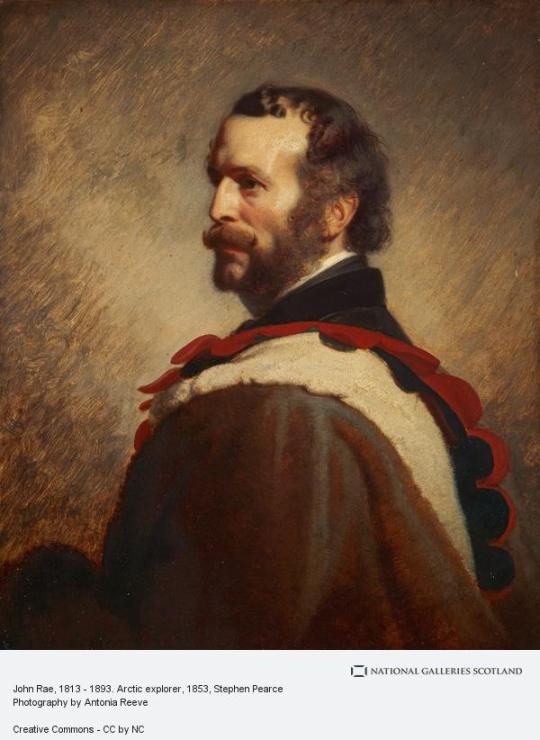
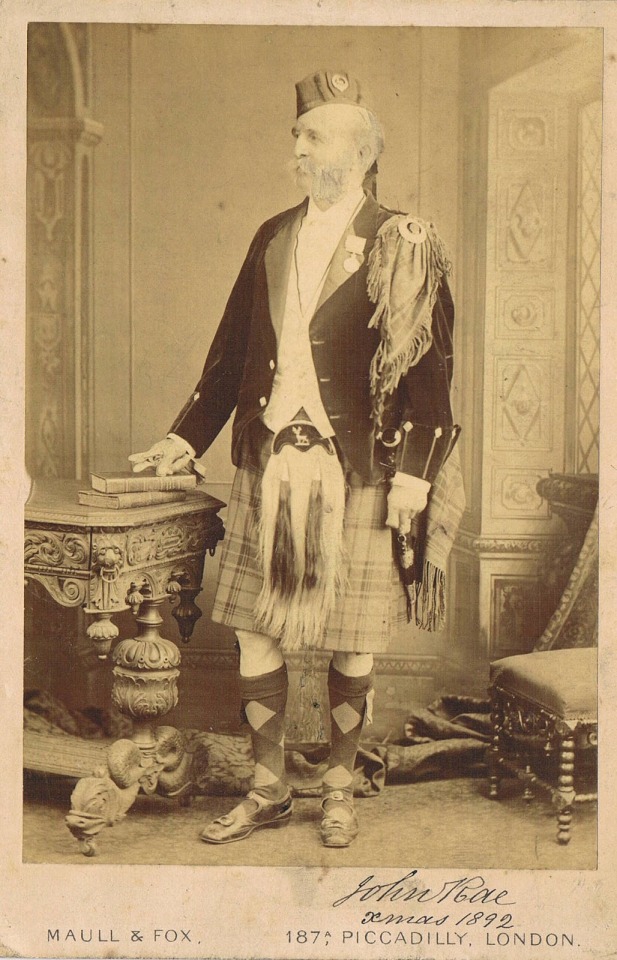


The surgeon and explorer John Rae was born on 30th September 1813 at the Hall o'Clestrain in Orphir on Orkney Islands.
Orkneyjar, a great site I use for sourcing information on the islands states that “John Rae is undoubtedly one of Orkney’s greatest unsung heroes.” and who am I to argue, they also point out that although his memorial is prominent in St Magnus Cathedral, few Orcadians, and indeed Scots in general, have heard of him.
John Rae was the son of John, factor on Sir William Honeyman's estate, and his wife Margaret (Glen). His father was appointed Orkney agent for the Hudson's Bay Company.
After qualifying in Edinburgh as a surgeon young John served on a Hudson's Bay vessel travelling to Canada. Ice forced him to stay over winter there and he loved the area and the wild type of life so much he remained as surgeon at the Moose Factory post on Hudson Bay.
He studied the ways of the local Cree Indians, gathering knowledge and skills from them. The Inuit called him "Aglooka" as he was the best snowshoe walker of his time. In 1849 he took over the Mackenzie river district at Fort Simpson and charted unknown territories on the north Canadian coast. He succeeded in proving the existence of a North West passage (a navigable route across the Arctic from the Atlantic to the Pacific) and searched for the lost Franklin expedition, who were also searching for the passage. Information from the Inuit given to Rae showed that Franklin's men had all perished and the bodies showed signs of cannibalism.
Of course his report made him very unpopular, author Charles Dickens published articles rejecting Rae’s conclusions and the manner in which he had reached them. According to Dickens, it was unthinkable that the English Navy "would or could in any extremity of hunger, alleviate that pains of starvation by this horrible means". The Englishman wrongly pointed the finger at the Inuit, whom he viewed very negatively, as evidenced by his writings, are more likely to have killed the expedition's survivors.
Due to the backlash from London Rae’s achievements were largely ignored for some time.
He retired in 1856 but continued exploration and work for telegraph companies to find routes through Greenland, Alaska and British Columbia. In 1860 he married Catherine Thompson. He died in London on 22nd July 1893 and his body was taken by steamer to Kirkwall for burial.
I revert you back to the OrkneyJar website for a much bigger picture of the life of John Rae http://www.orkneyjar.com/history/historicalfigures/johnrae/
Another dedicated site for the Orkneys also has a full account, concentrating mainly on his search for the Franklin mission, with more pictorial content https://www.orkneyology.com/john-rae.html
19 notes
·
View notes
Text


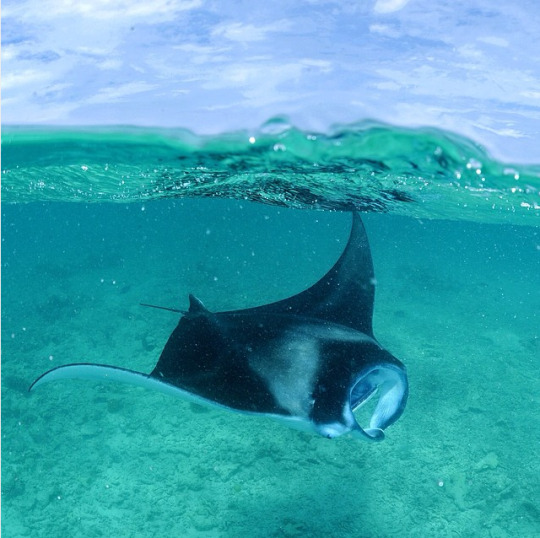

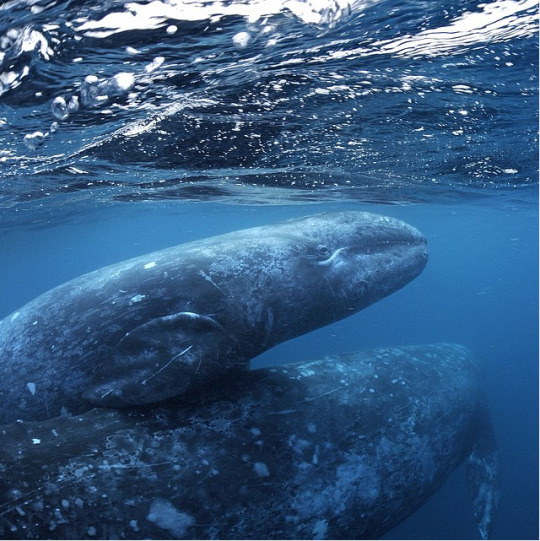
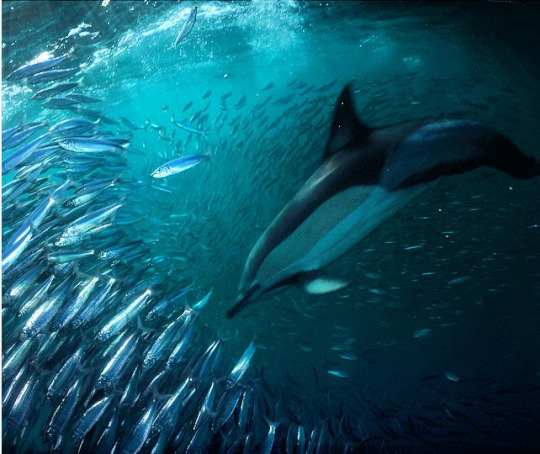

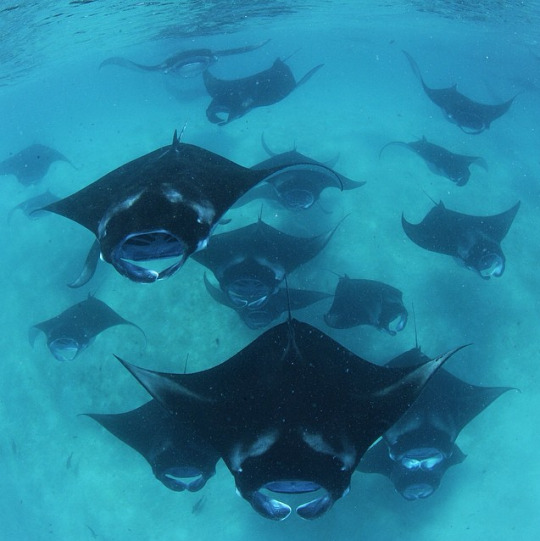

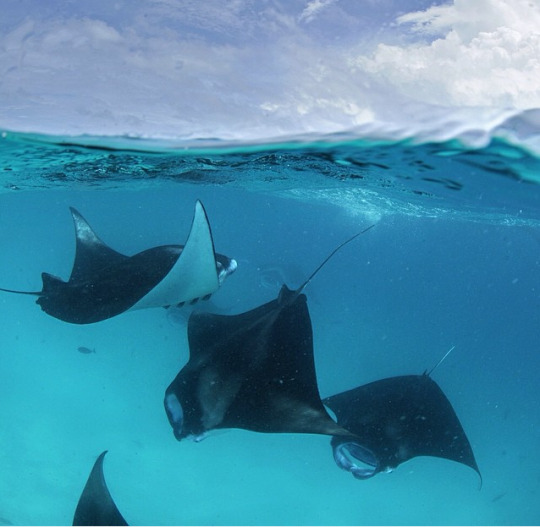

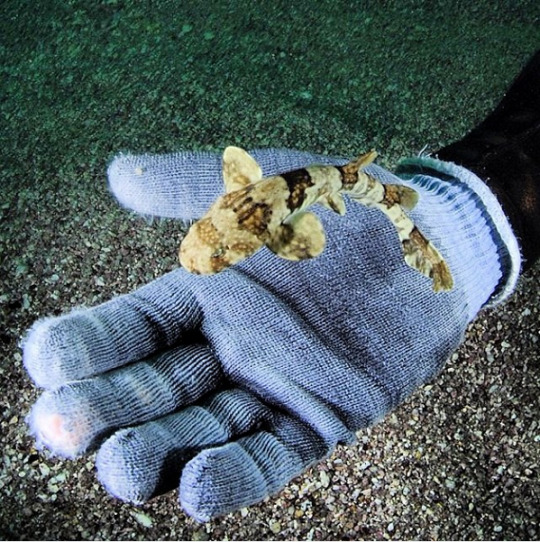
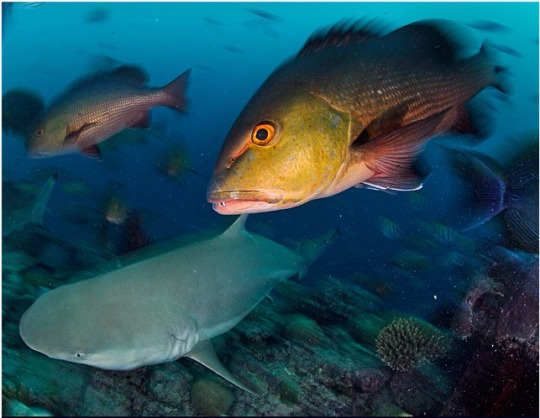
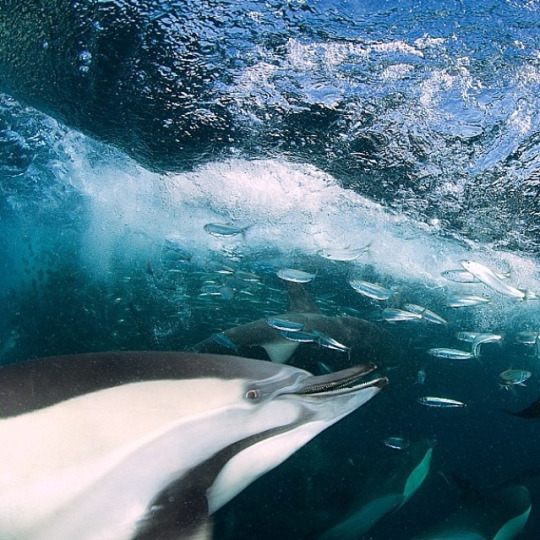
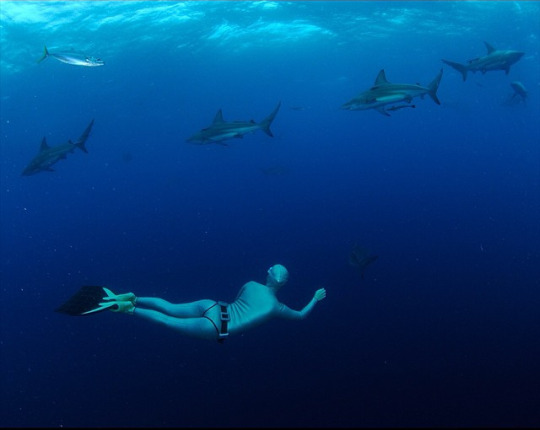

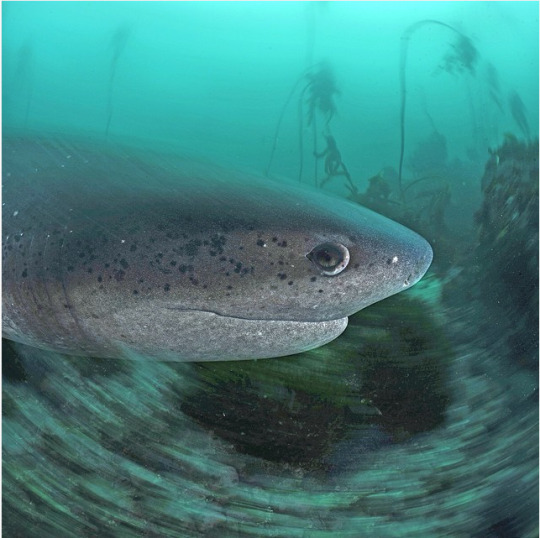
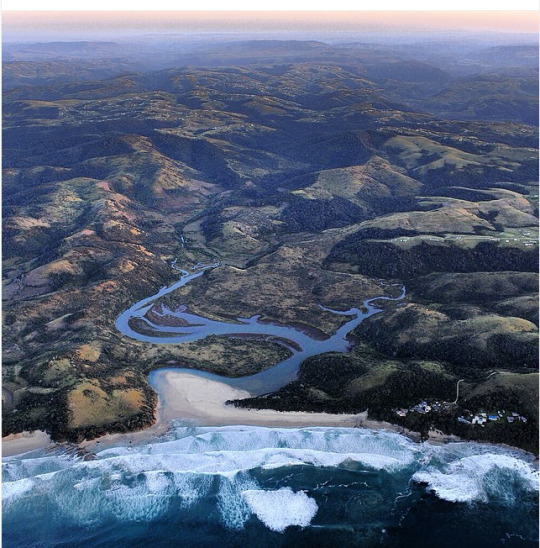

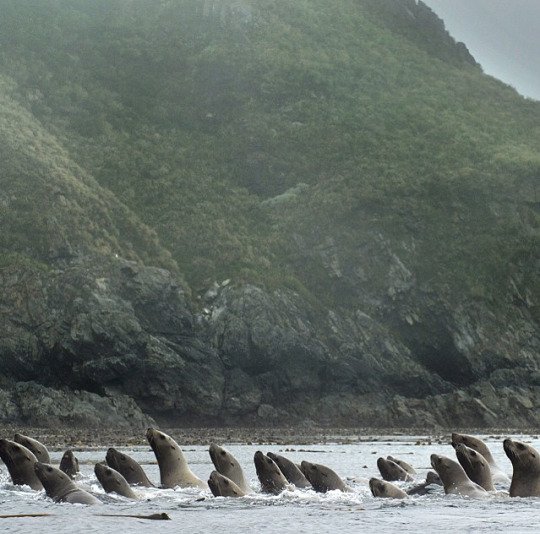

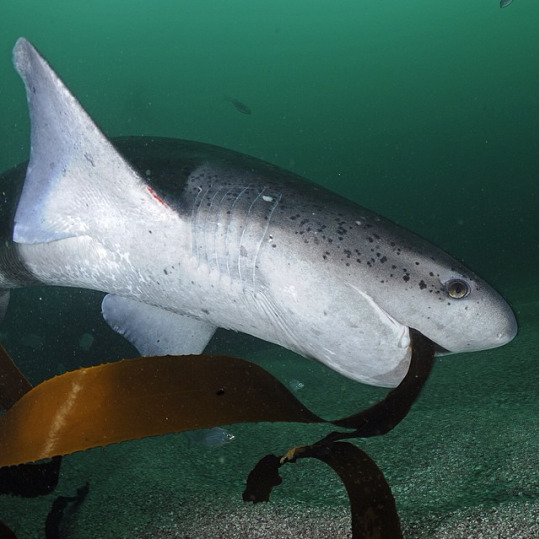
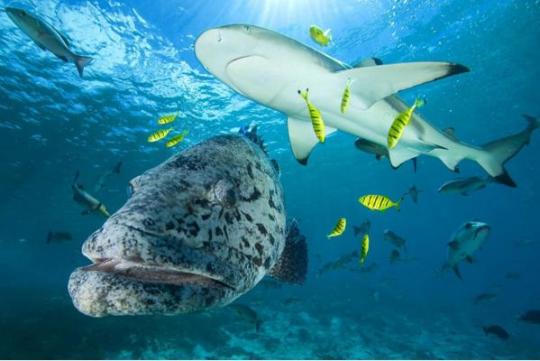



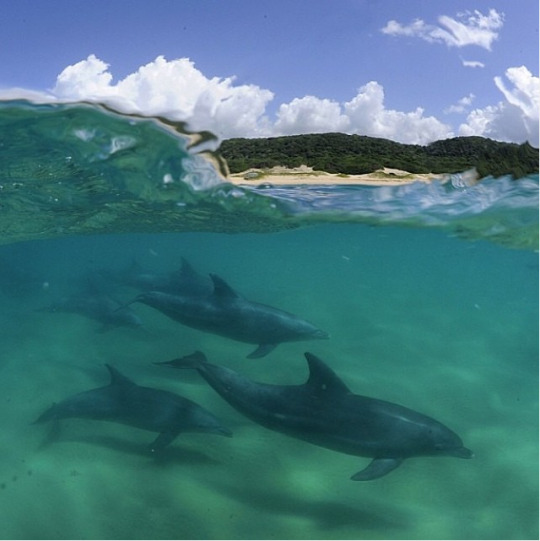


Photos and text: @thomaspeschak
1-. A blacktip reef shark navigates a narrow canyon off Aldabra Atoll. Seychelles
2-. Every winter sub-adult whale shark gather in the seas off Djibouti
3-. Hanifaru Bay in the Maldives
4-. I had been watching these seals for years & wanted to photograph them surfing a unique underwater perspective on southern African marine reserves
5-. In Mexico's San Ignacio lagoon a gray whale mother pushes it's young calf to the surface so it can get a better look at the photographer
6-. June-July is sardine run time off South Africa's East Coast. Long-beaked common dolphins are the only predators that hunt cooperatively
7-. Kira is a black labrator that loves swimming with dolphins
8-. Manta rays. Hanifaru Bay in the Maldives
9-. Mantas feeding amongst baifsish. Hanifaru Bay
10-. Reef mantas feeding at Hanifaru Marine Reserve
11-. My fascination with seahorses began more than 10 years ago when I still was a graduate student in marine biology
12-. Not all sharks look like Jaws. An endemic Puffader shy shark hovers above dive guide hand
13-. Sharks, Bohar snapper and other predatory fish are abundant on the fringing coral reefs of the seas around D'Arros Island and St. Joseph Atoll, Seychelles
14-. Long beaked common dolphin hunting sardines off South Africa's Wild Coast
15-. South African free diver @hanlinprinsloo diving with blacktip sharks in the Aliwal Shoal Marine Protected Area
16-. y 17-. South Africa's Table Mountain Marine Protected Area host a unique sevengil shark aggregation site wich draws divers from all over the world
18-. South Africa's Wild Coast is a mosaic of river mouths, grassy hillsides and formidable sea cliffs
19-. Aerial perspective of the sanctuary zone of the Ponta do Ouro Marine Reserve, Mozambique
20-. Steller's sea lions ar common off Canada's British Colomia coast where populations of their preferred prey such a sand lance and herring are still relatively abundant
21-. Sunflower sea stars are the largest shallow water starfish in the world
22-. The broadnosed sevengill shark is a top predator in South Africa's kelp forests. With saw shaped teeth akin to tiger sharks, they hunt fish and scavenge dead fur seals
23-. The seas around Aldabra atoll are some of the most pristine in the Seychelles and the entire western Indian Ocean
24-. The tail belongs to one of the top predators in South Africa's kelp forest
25-. This green turtle traverses the unbelievably blue waters of Europa Atoll in search of a mate
26-. To survive in the vastness of the open ocean, Silky sharks rely on their boldness and curiosity to investigate every opportunity that might yield a meal
27-. y 28-. This pod of Indo-Pacific Bottlenose dolphins regularly crosses from Mozambican into South African waters
4 notes
·
View notes